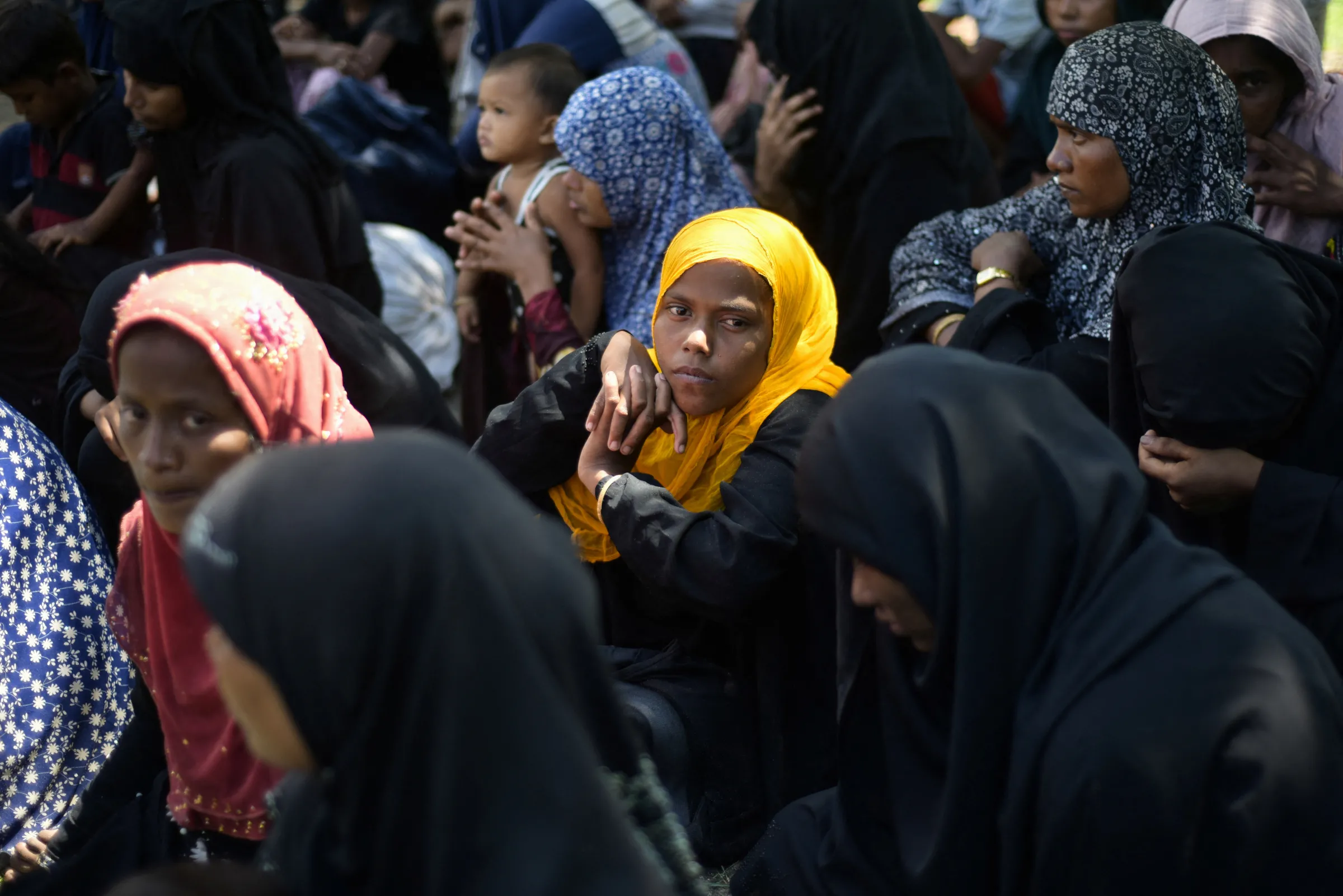Where are the world's stateless people?

Rohingya Muslim women rest after landing in Blang Ulam, Aceh province, Indonesia, December 10, 2023. REUTERS/Riska Munawarah
What’s the context?
An ambitious U.N. campaign to eradicate statelessness ends this month, but large populations still have no nationality
- Millions not recognised as citizens by any country
- United Nations' 10-year #IBelong campaign ends in October
- Large stateless populations in Myanmar and Bangladesh
LONDON - Millions of people are not recognised as citizens by any country, often depriving them of basic rights most of the world takes for granted such as education, healthcare and jobs.
The United Nations’ refugee agency is hosting a major meeting in Geneva on Oct. 14 to review progress and launch a new drive to end the plight of some of the most invisible and marginalised people on the planet.
The event will also mark the end of its decade-long #IBelong campaign, which had aimed to eradicate statelessness by 2024.
After decades of neglect, many countries are now taking action to tackle the issue, but elsewhere progress is slow to non-existent.
Here are some of the largest stateless populations.
MYANMAR/BANGLADESH: In 1982, Buddhist-majority Myanmar passed a citizenship law that effectively rendered stateless most Rohingya, who are Muslim and of South Asian descent.
Ethnic violence has driven many to leave, but about 634,000 remain in Myanmar, according to U.N. data.
Almost 1 million Rohingya have been displaced to neighbouring Bangladesh. Many others have fled to countries across Asia, notably Malaysia.
Some are sold into slavery on fishing boats and plantations.
IVORY COAST: About 931,000 people in Ivory Coast lack nationality. Many are descended from migrants from neighbouring countries who were encouraged to work on Ivory Coast's coffee and cotton plantations in the 20th century.
At least a quarter of Ivory Coast's population is estimated to be of foreign descent, and the question of who is or is not Ivorian helped fuel two civil wars in the West African country.
The authorities have resolved some cases, but progress is extremely slow.
THAILAND: More than 587,000 people are stateless, including members of ethnic hill tribes such as the Yao, Hmong and Karen who live in the mountainous border with Myanmar and Laos, and seafaring, semi-nomadic people who live along the Andaman coast.
Thailand is resolving cases, but the process is cumbersome. However, it has improved stateless people's access to services.
LATVIA/ESTONIA: When the Soviet Union broke up, many ethnic Russians remained in the new Baltic states and were defined as "non-citizens".
About 180,600 stateless people live in Latvia and nearly 64,900 in Estonia, mainly ethnic Russians who have trouble obtaining citizenship and at times face discrimination.
Hundreds of thousands of former Soviet citizens were left stateless when the Soviet Union dissolved in 1991 and they failed to gain nationality in the 15 new states.
In 2019, Kyrgyzstan became the first country in the world to end statelessness by granting citizenship to all people in its territory. Turkmenistan is expected to announce the same at next week’s meeting.
SYRIA: In 1962, many Kurds in the northeast were stripped of citizenship, a move Human Rights Watch described as part of a plan to "Arabise" the resource-rich region.
Before the civil war, there were an estimated 300,000 stateless Kurds in Syria, many of whom were promised nationality by President Bashar al-Assad in reaction to the 2011 uprising.
U.N. data suggests the number fell to 160,000, but this may be partly because many fled the war.
There are also concerns that some children born to Syrians displaced by the war could end up stateless.
KUWAIT: Stateless people are known as Bidoon, which is short for bidoon jinsiya meaning "without nationality" in Arabic. Some trace their origins to nomadic tribes that once moved freely around the Gulf region.
There are about 92,000 Bidoon in Kuwait, according to U.N. data, but some estimates are much higher. They are often barred from free education, healthcare and many jobs.
NEPAL: Although Nepal says it does not have a stateless population, experts on statelessness believe many people - possibly hundreds of thousands - may be affected.
Part of the problem derives from a discriminatory law restricting women married to foreigners from passing their nationality to their children. There is also a stateless population of people who were expelled by Bhutan in the 1990s.
DOMINICAN REPUBLIC: A 2013 court ruling, along with earlier changes to nationality laws aimed at tackling illegal migration, has left many stateless, mostly people of Haitian descent who were born in Dominican Republic.
Some who lost their Dominican nationality in 2013 have been able to reacquire it, but roughly 100,000 people remain stateless.
EUROPE: Tens of thousands of stateless Roma - an ethnic group with origins in India - are thought to live in central, eastern and southern Europe. With the break-up of Czechoslovakia and Yugoslavia, successor states claimed they belonged elsewhere.
Other Roma in Kosovo and Bosnia have become stateless due to war-time displacement.
Roma are often unable to register their children's births or hold official property titles. This can make it hard to prove where they are from.
INDIA: There are concerns that many people in the northeastern state of Assam, the majority of them Muslim, could become stateless.
Nearly 2 million people were left off a register of citizens published by Indian authorities in 2019 as part of a contentious exercise against illegal immigration from Bangladesh.
OTHER COUNTRIES: Globally, data from 95 countries shows 4.4 million people lack a nationality, but some countries which are believed to have large stateless populations do not provide data, meaning the real figure is likely significantly higher.
These include Democratic Republic of Congo, Lebanon, Pakistan and Zimbabwe.
(Reporting by Emma Batha; Editing by Ayla Jean Yackley.)
Context is powered by the Thomson Reuters Foundation Newsroom.
Our Standards: Thomson Reuters Trust Principles
Tags
- Government aid
- War and conflict


















